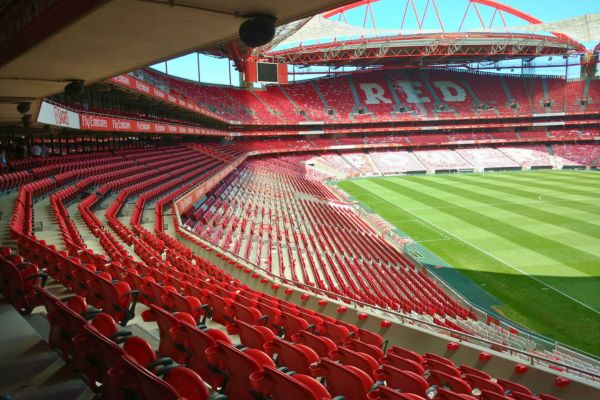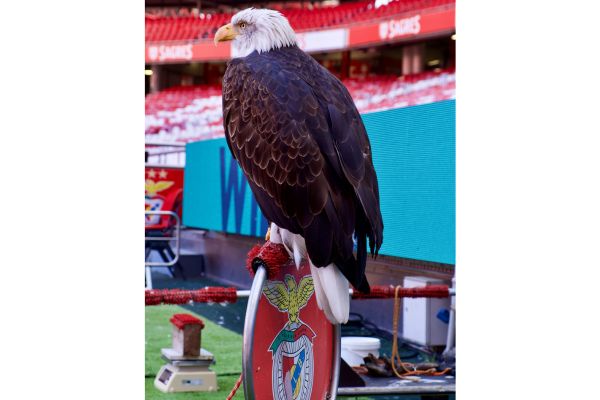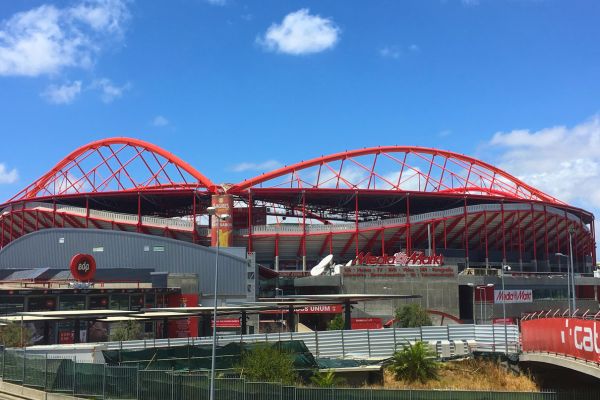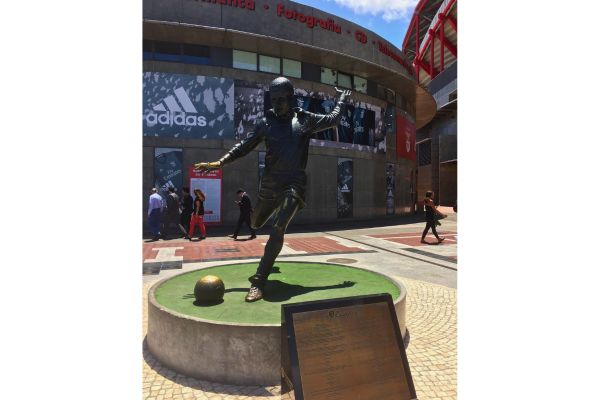The fans are packed in — faces painted red, scarves raised high, flags waving proudly. A sea of passion waits for Benfica to take the field. Music booms over the loudspeakers, but something curious is happening: people are looking up, not at the screens, but at the sky.
A dark silhouette circles above — Águia Vitória, Benfica’s legendary eagle, soaring high over the stadium. Moments later, she descends and lands on the giant Benfica crest. Her presence completes the badge, which features an eagle as its symbol.
This isn’t just pre-match entertainment. It’s ritual. It’s identity.
This is matchday at Estádio da Luz — the heart of Portugal’s most successful club.
A Stadium of Light, History, and Transition

Though the current Estádio da Luz opened in 2003, it replaced a ground of the same name that had stood since 1954 — a place deeply embedded in Portuguese football history.
The original stadium hosted European Cup finals, countless domestic titles, and the peak of Benfica's dominance in the 1960s under the legendary Eusébio. It was the birthplace of Benfica's European legacy — a club that once stood toe-to-toe with the best, reaching five European Cup finals, and winning two.
The new stadium, built just metres from the original, carries that legacy forward. With a capacity of around 65,000, it is Portugal’s largest stadium and a UEFA Elite Venue, having hosted the Euro 2004 Final and the 2014 Champions League Final between Real Madrid and Atlético. Interestingly, Estádio da Luz shares its architectural DNA with Arsenal’s Emirates Stadium — both were designed by the same firm and bear a strikingly similar modern aesthetic.
Benfica: Giants of Portugal, Sellers to the World

Benfica remain a powerhouse in Portuguese football, with a record number of Primeira Liga titles. But in recent decades, they’ve struggled to replicate their old European success. Still, their impact on the global game is huge — especially in the transfer market.
Like rivals Porto and Sporting, Benfica are masters of talent development and scouting. They’ve sold stars like João Félix and Darwin Núñez for enormous fees, often after just one or two breakout seasons. The dream among fans remains the same: that one day, they can hold onto their golden generation long enough to bring continental glory back to Lisbon.
Visiting Estádio da Luz

Estádio da Luz is more than just a football stadium — it’s a living cultural experience. If you can’t make it for a match, you can still take a stadium tour and visit the Benfica Museum, home to a vast trophy collection and tributes to club legends.

Outside, fans are greeted by the statue of Eusébio — Benfica’s greatest ever player. Born in Mozambique, Eusébio led the club to European glory and remains a lasting symbol of pride, heritage, and excellence.
The stadium is easily accessible via the Lisbon Metro. Just take the Blue Line to Colégio Militar/Luz. And if you're up for a walk, Sporting’s Estádio José Alvalade — home of Benfica’s fiercest rivals — is about a 30-minute stroll away. The two clubs divide the city and fuel one of Portugal’s most intense football rivalries.
A Modern Legendary Stadium?

Some purists argue that a stadium built in 2003 can't be called legendary. But this isn’t a generic relocation — it was built next door, preserving the traditions and neighbourhood heartbeat of the club.
Clubs like Arsenal, Athletic Bilbao, and Juventus have made similar transitions — building sleek new homes on familiar ground. Some, like Watford, rebuild stand-by-stand to preserve history. And others, like Wimbledon, suffer when moved too far. (Read more in The Stadium That Wouldn’t Die.)
Estádio da Luz may be modern, but it carries decades of memories, rivalries, victories, and hopes on its shoulders. That makes it more than worthy of legendary status.
Related Reading
Why Crystal Palace Are Called The Eagles: Discover how Benfica’s soaring symbol helped shape an English club’s identity.
